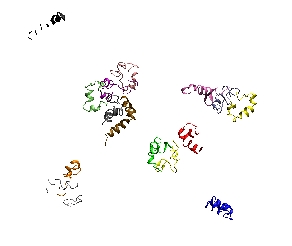Coarse-grained modelling of protein dynamics and interactions

We develop coarse-grained models with different levels of resolution and enhanced sampling algorithms to study efficiently large scale protein conformational transitions, protein aggregation, macromolecular assemblies and protein-protein interactions in very large systems.
Large systems and long timescales that would demand an unfeasible simulation time with usual atomistic molecular dynamics methods become feasible when using coarse-grained representations of the system with a lower resolution than the atomistic representation used in standard molecular dynamics simulations.
We use several types of coarse-grained representations of the structures for generating realistic large-scale conformational transition pathways [1], [2], multiscale representations with different levels of coarse-graining in the system to account for flexibilty in protein-protein docking [3], and physics-based coarse-grained models with transferable potentials independent of any structural information to study the dynamics and aggregation of intrinsically disordered proteins.
References
- Finding Conformational Transition Pathways from Discrete Molecular Dynamics Simulations,
, Journal of Chemical Theory and Computation, 2012/11/13, Volume 8, p.4707 - 4718, (2012)
- Exploration of conformational transition pathways from coarse-grained simulations.,
, Bioinformatics, 2013 Aug 15, Volume 29, p.1980-6, (2013)
- Efficient relaxation of protein-protein interfaces by discrete molecular dynamics simulations,
, Journal of Chemical Theory and Computation, Volume 9, p.1222-1229, (2013)
